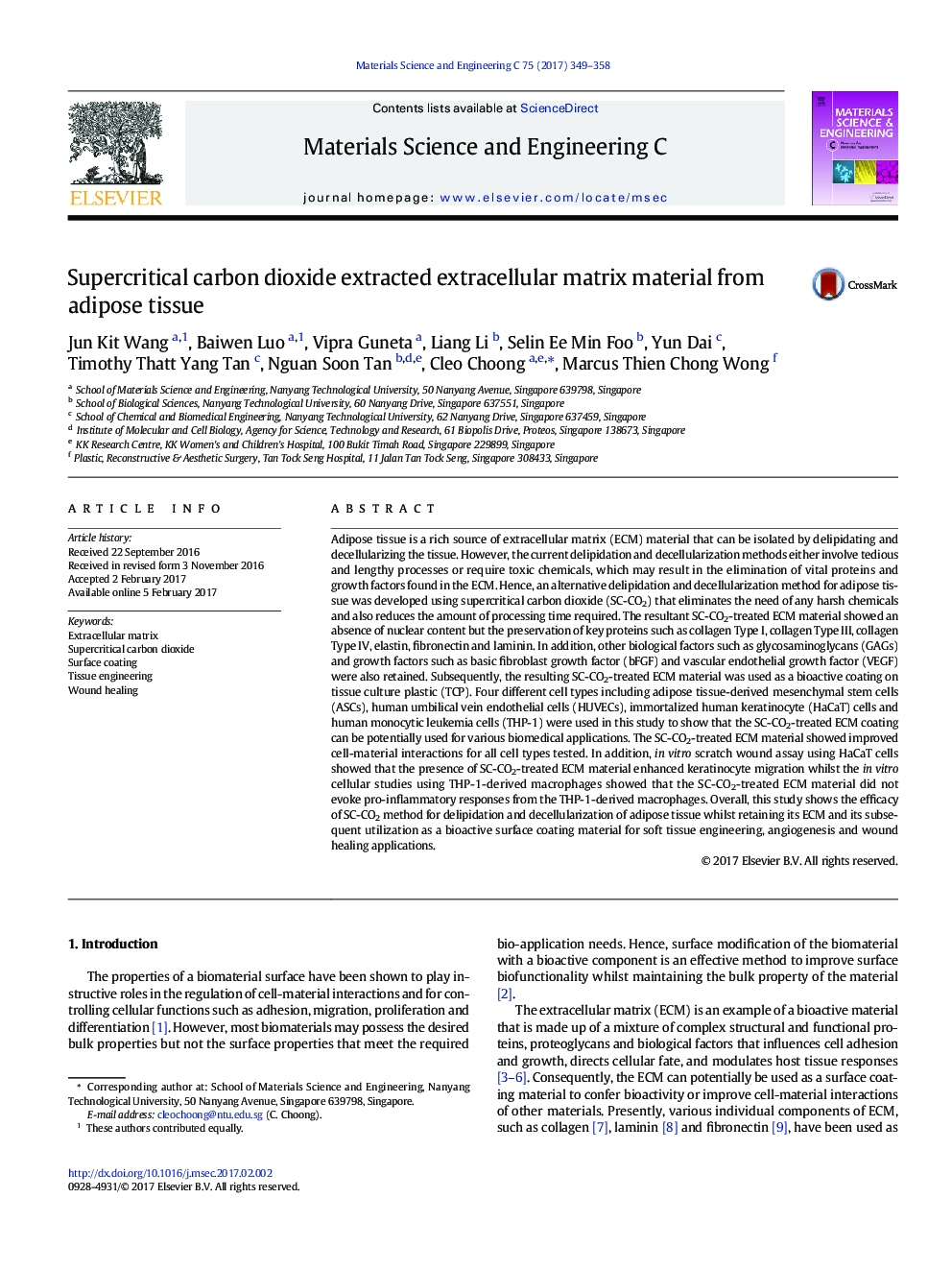| کد مقاله | کد نشریه | سال انتشار | مقاله انگلیسی | نسخه تمام متن |
|---|---|---|---|---|
| 5434832 | 1509146 | 2017 | 10 صفحه PDF | دانلود رایگان |
Adipose tissue is a rich source of extracellular matrix (ECM) material that can be isolated by delipidating and decellularizing the tissue. However, the current delipidation and decellularization methods either involve tedious and lengthy processes or require toxic chemicals, which may result in the elimination of vital proteins and growth factors found in the ECM. Hence, an alternative delipidation and decellularization method for adipose tissue was developed using supercritical carbon dioxide (SC-CO2) that eliminates the need of any harsh chemicals and also reduces the amount of processing time required. The resultant SC-CO2-treated ECM material showed an absence of nuclear content but the preservation of key proteins such as collagen Type I, collagen Type III, collagen Type IV, elastin, fibronectin and laminin. In addition, other biological factors such as glycosaminoglycans (GAGs) and growth factors such as basic fibroblast growth factor (bFGF) and vascular endothelial growth factor (VEGF) were also retained. Subsequently, the resulting SC-CO2-treated ECM material was used as a bioactive coating on tissue culture plastic (TCP). Four different cell types including adipose tissue-derived mesenchymal stem cells (ASCs), human umbilical vein endothelial cells (HUVECs), immortalized human keratinocyte (HaCaT) cells and human monocytic leukemia cells (THP-1) were used in this study to show that the SC-CO2-treated ECM coating can be potentially used for various biomedical applications. The SC-CO2-treated ECM material showed improved cell-material interactions for all cell types tested. In addition, in vitro scratch wound assay using HaCaT cells showed that the presence of SC-CO2-treated ECM material enhanced keratinocyte migration whilst the in vitro cellular studies using THP-1-derived macrophages showed that the SC-CO2-treated ECM material did not evoke pro-inflammatory responses from the THP-1-derived macrophages. Overall, this study shows the efficacy of SC-CO2 method for delipidation and decellularization of adipose tissue whilst retaining its ECM and its subsequent utilization as a bioactive surface coating material for soft tissue engineering, angiogenesis and wound healing applications.
405
Journal: Materials Science and Engineering: C - Volume 75, 1 June 2017, Pages 349-358
